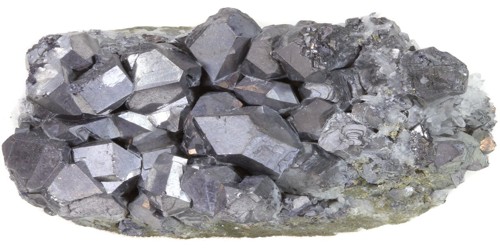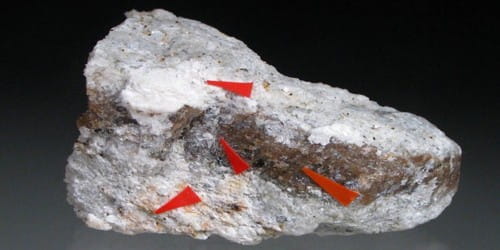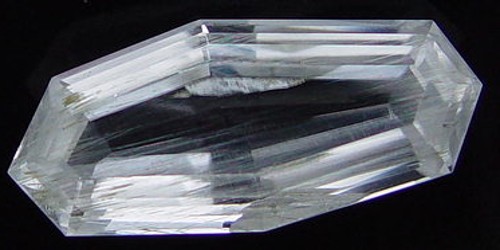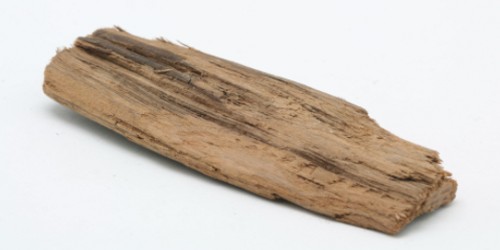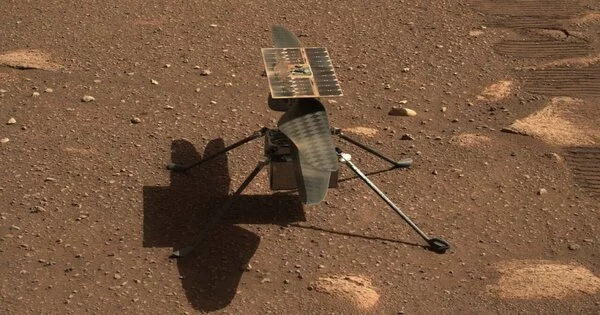Definition –
Orthoclase, or orthoclase feldspar (endmember formula KAlSi3O8), is one of the most abundant rock-forming minerals of the continental crust. It is an important tectosilicate mineral which forms igneous rock. Orthoclase is most widely known as the pink feldspar found in many granites and as the mineral assigned a hardness of “6” in the Mohs hardness scale.
The name is from the Ancient Greek for “straight fracture,” because its two cleavage planes are at right angles to each other. It is a type of potassium feldspar, also known as K-feldspar. The gem known as moonstone is largely composed of orthoclase.
Named “orthose” in 1801 by Rene Just Haüy from the Greek orthos – “right” in allusion to the mineral’s right angle of good cleavage. The sense of Haüy’s name was that the mineral was a feldspar, but he did not specify a type-locality, nor did Haüy give a chemical analysis. The name was changed in 1823 to orthoklas by Johann Friedrich August Breithaupt. Although petrologists had used twinning as a method of distinguishing orthoclase from microcline, Wright and Stewart (1958) used the difference in certain d values to calculate a degree of disorder of a sample and thus have a quantitative method to identify the structural state of a potassium feldspar. Despite the enormous number of reports of orthoclase in granite pegmatites, orthoclase is extremely rare in such deposits.
Orthoclase usually occurs as variously colored, frequently twinned crystals in granite. Orthoclase is used in the manufacture of glass and ceramics; occasionally, transparent crystals are cut as gems. Orthoclase is primarily important as a rock-forming mineral, however, and is abundant in alkali and acidic igneous rocks, in pegmatites, and in gneisses.
Orthoclase is also known in igneous rocks found on the moon and on Mars. Orthoclase is an important constituent of igneous rocks brought back from the moon by astronauts. It has also been detected in the igneous rocks of Mars during analyses done by NASA’s rovers.

Occurrence and Properties of Orthoclase –
Orthoclase is one of the most common minerals, and occurs in numerous mineral environments, and it is found worldwide. Most orthoclase forms during the crystallization of a magma into intrusive igneous rocks such as granite, granodiorite, diorite, and syenite. Significant amounts of orthoclase are also found in extrusive igneous rocks such as rhyolite, dacite, and andesite.
Large crystals of orthoclase are found in igneous rocks known as pegmatite. They are normally no more than a few inches in length, but the largest reported orthoclase crystal was over 30 feet in length and weighed about 100 tons. It was found in a pegmatite in the Ural Mountains of Russia. Transparent gemmy yellow crystals that have recently become very popular come from a pegmatite in Madagascar, at Itrongay, Tulear Province.
Some of the best crystals come from Baveno, Piedmont, Italy, especially the famous Baveno twins. Good crystals come from San Piero in Campo on the Island of Elba, Italy; and Zarzalejo, Madrid, Spain; Switzerland contains numerous good localities in the pegmatites of Uri.
Orthoclase is also a significant constituent of the metamorphic rocks known as gneiss and schist. These rocks most often form during regional metamorphism when granitic rocks are subjected to heat and pressure at convergent plate boundaries involving continental crust. The orthoclase in these metamorphic rocks is inherited from their igneous protoliths.
Orthoclase is the potassium-bearing end-member of the system; its symbol is Or. Orthoclase is a member of the alkali feldspar series. The alkali feldspars include albite (NaAlSi3O8), anorthoclase ((Na,K)AlSi3O8), sanidine ((K,Na)AlSi3O8), orthoclase (KAlSi3O8), and microcline (KAlSi3O8).
All feldspar minerals are usually translucent to transparent, display two directions of cleavage that intersect at approximately 90 degrees, have a vitreous to pearly luster on cleavage faces, and have a specific gravity between about 2.5 and 2.6. Because of these similarities, the feldspar minerals can be challenging to identify with absolute confidence in the field or the introductory classroom. This becomes more difficult when their crystals are part of an igneous rock with a grain-size of just a few millimeters or less. Special mineralogical or gemological testing equipment is often needed to positively identify the feldspar minerals.
Orthoclase has an intermediate degree of ordering of the aluminum and silicon atoms in its aluminosilicate crystal framework, falling between the fully ordered arrangement of microcline and the random arrangement of high-sanidine.
Uses of Orthoclase –
Orthoclase is industrially important in the manufacture of glass and ceramics. Orthoclase crystals and twins provide information on the formation of minerals and environmental factors. Well shaped crystals and twins are highly sought after by mineral collectors, and the Moonstone variety is used as a gemstone.
Most moonstones are translucent and white, although grey and peach-colored varieties also occur. In gemology, their luster is called adularescence and is typically described as creamy or silvery white with a “billowy” quality. It is the state gem of Florida. The gemstone commonly called rainbow moonstone is more properly a colorless form of labradorite and can be distinguished from “true” moonstone by its greater transparency and play of color, although their value and durability do not greatly differ.
Information Sources:

